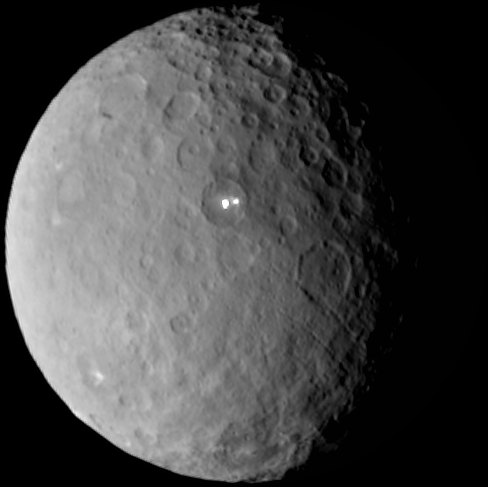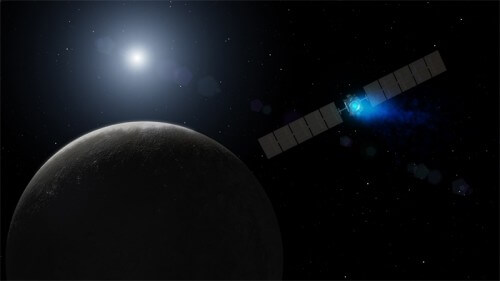Ceres is the largest object in the asteroid belt between Mars and Jupiter. Day by day the spacecraft transmits better images of it, including mysterious white formations - most likely ice

NASA's Dawn spacecraft recently transmitted new images of the surface of the dwarf planet Ceres as it enters orbit today.
"Dawn is about to make history," says Robert Mayes, project manager at NASA's Jet Propulsion Laboratory in California. "Our team is ready and eager to find out what Kress has in store."
Images broadcast by Dawn show numerous craters on Ceres, the first object discovered in the asteroid belt, as well as unexpected bright spots that may indicate that Ceres' surface is changing.
As the spacecraft spins and approaches an orbit around Keres, the researchers will look for clues as to how the strange formations are changing, which may indicate geological activity in the current period.
"Hook research will allow us to perform historical research in space and open a window to the earliest chapter in the history of the solar system" says Jim Green, Director of the Planetary Division at NASA Headquarters in Washington. "The data that Dawn will launch may contribute to a significant breakthrough in our understanding of how the solar system formed."
Dawn began the final phase of the glide towards Keres in December. The spacecraft took several navigation images and the two coffee features, which made it possible to observe the hook during each of the nine hours it orbited. Since January 25, Dawn has been broadcasting the highest-resolution images of Ceres, and their quality will improve as the spacecraft gets closer.
The Sicilian astronomer Giuseppe Giuseppe Piazzi observed the hook in 1801. As more objects were discovered in this area, they were called asteroids or secondary planets. Ceres was initially classified as a planet but later named an asteroid. In recognition of its planet-like properties it was declared a dwarf planet in 2006 along with Pluto and Eris.
Keres is named after Eilat, the Roman city of agriculture and crops. The craters on Keres will therefore be named after gods or goddesses of agriculture from all world mythologies. Other formations will be named after agricultural celebrations.
The Dawn spacecraft was launched in 2007 and first orbited the giant asteroid Vesta for 14 months in 2011 and 2012. It took detailed pictures and transmitted data about the asteroid. Both Vesta and Ceres orbit the Sun between Mars and Jupiter in the main asteroid belt. This two-stop journey through the solar system was made possible thanks to the three ion engines that are more efficient than chemical fuel.
"Both Vesta and Ceres were on their way to becoming planets but their development was hindered by Jupiter's gravity," says Carol Raymond, Dawn's deputy principal investigator at JPL. "These two bodies are a kind of fossils of the dawn of the solar system and they shed light on its roof."
However, Keres and Lusta have some important differences. Ceres is the heaviest body in the asteroid belt and has an average diameter of 950 kilometers. The surface of Keres, if they were spread out, would cover 38% of the area of the continental United States. Luste has an average diameter of 525 kilometers and is the second largest object in the asteroid belt. The asteroid formed before Keres and is a very dry body. It is estimated that the mass of a hook, on the other hand, contains about 25% water.
"By studying Vesta and Cress, we will be able to better understand the process of the formation of the solar system, in particular the terrestrial planets, led by the Earth." Raymond says. "These bodies are samples of the building blocks that created Venus, Earth and Mars. Vesta-like bodies are likely the ones that contributed the material to the Earth's core and hook-like stars may have provided the water.

"We would not be able to orbit and explore these two worlds without an ion engine," Mayes said. "Dawn uses cutting-edge technology to discover big science on a small budget."
More of the topic in Hayadan:
